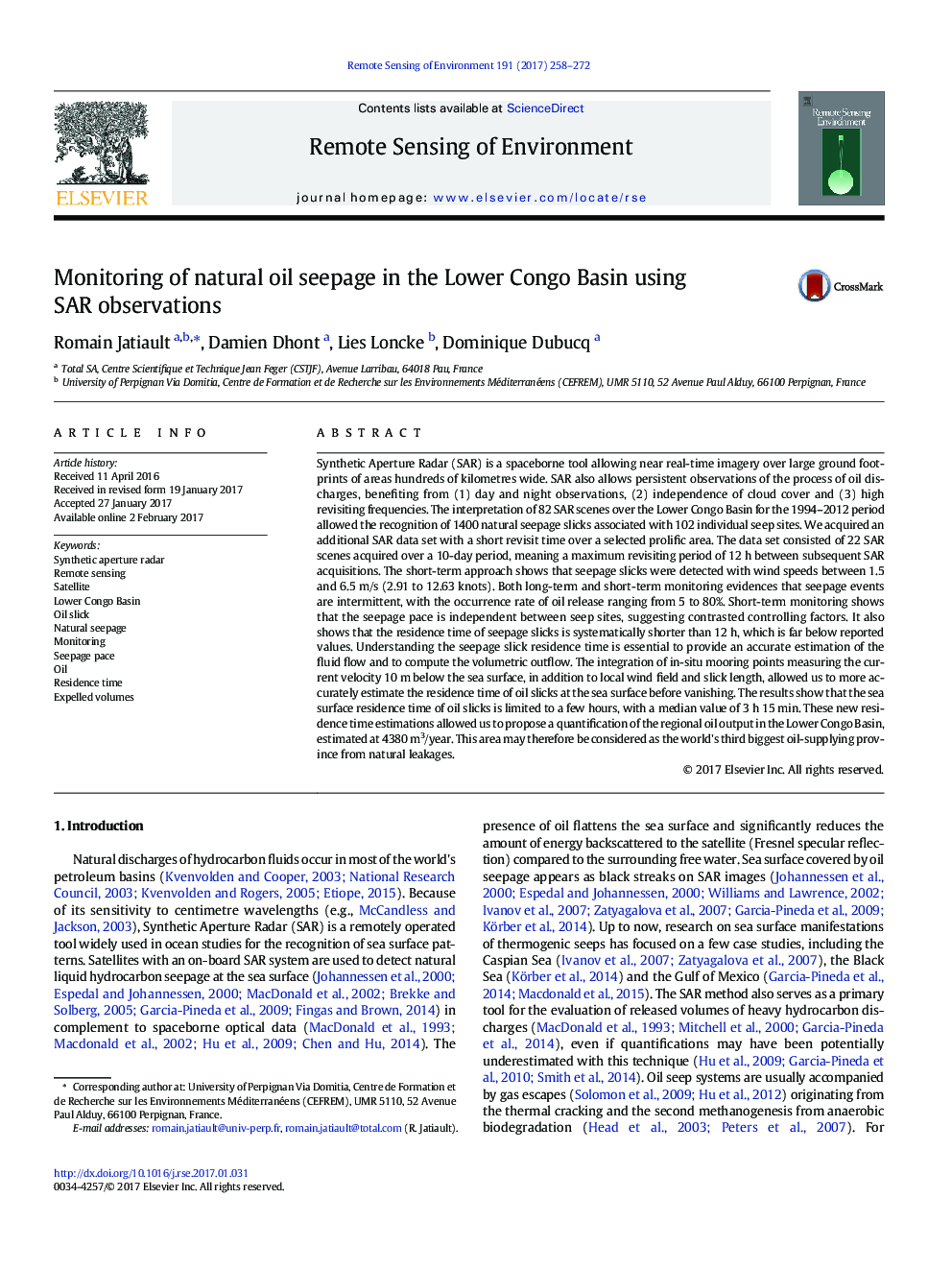| کد مقاله | کد نشریه | سال انتشار | مقاله انگلیسی | نسخه تمام متن |
|---|---|---|---|---|
| 5755040 | 1621209 | 2017 | 15 صفحه PDF | دانلود رایگان |
عنوان انگلیسی مقاله ISI
Monitoring of natural oil seepage in the Lower Congo Basin using SAR observations
دانلود مقاله + سفارش ترجمه
دانلود مقاله ISI انگلیسی
رایگان برای ایرانیان
کلمات کلیدی
موضوعات مرتبط
مهندسی و علوم پایه
علوم زمین و سیارات
کامپیوتر در علوم زمین
پیش نمایش صفحه اول مقاله

چکیده انگلیسی
Synthetic Aperture Radar (SAR) is a spaceborne tool allowing near real-time imagery over large ground footprints of areas hundreds of kilometres wide. SAR also allows persistent observations of the process of oil discharges, benefiting from (1) day and night observations, (2) independence of cloud cover and (3) high revisiting frequencies. The interpretation of 82 SAR scenes over the Lower Congo Basin for the 1994-2012 period allowed the recognition of 1400 natural seepage slicks associated with 102 individual seep sites. We acquired an additional SAR data set with a short revisit time over a selected prolific area. The data set consisted of 22 SAR scenes acquired over a 10-day period, meaning a maximum revisiting period of 12 h between subsequent SAR acquisitions. The short-term approach shows that seepage slicks were detected with wind speeds between 1.5 and 6.5 m/s (2.91 to 12.63 knots). Both long-term and short-term monitoring evidences that seepage events are intermittent, with the occurrence rate of oil release ranging from 5 to 80%. Short-term monitoring shows that the seepage pace is independent between seep sites, suggesting contrasted controlling factors. It also shows that the residence time of seepage slicks is systematically shorter than 12 h, which is far below reported values. Understanding the seepage slick residence time is essential to provide an accurate estimation of the fluid flow and to compute the volumetric outflow. The integration of in-situ mooring points measuring the current velocity 10 m below the sea surface, in addition to local wind field and slick length, allowed us to more accurately estimate the residence time of oil slicks at the sea surface before vanishing. The results show that the sea surface residence time of oil slicks is limited to a few hours, with a median value of 3 h 15 min. These new residence time estimations allowed us to propose a quantification of the regional oil output in the Lower Congo Basin, estimated at 4380 m3/year. This area may therefore be considered as the world's third biggest oil-supplying province from natural leakages.
ناشر
Database: Elsevier - ScienceDirect (ساینس دایرکت)
Journal: Remote Sensing of Environment - Volume 191, 15 March 2017, Pages 258-272
Journal: Remote Sensing of Environment - Volume 191, 15 March 2017, Pages 258-272
نویسندگان
Romain Jatiault, Damien Dhont, Lies Loncke, Dominique Dubucq,